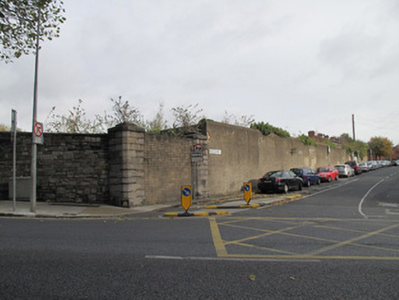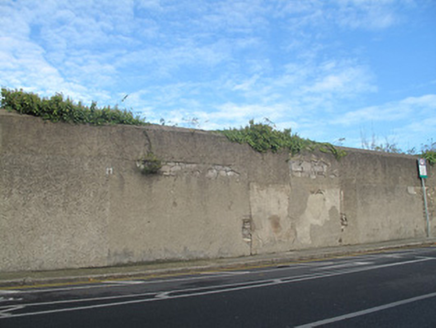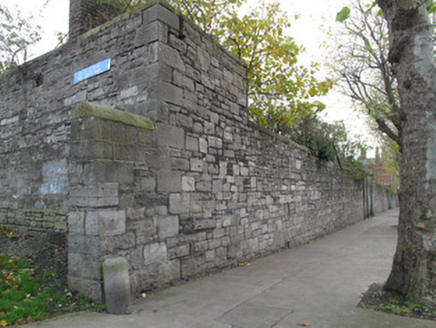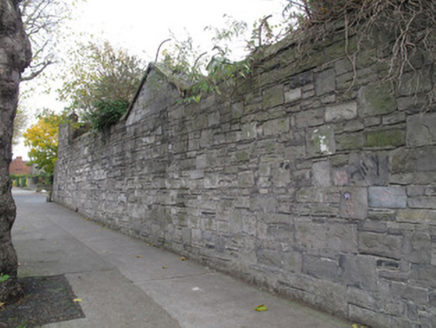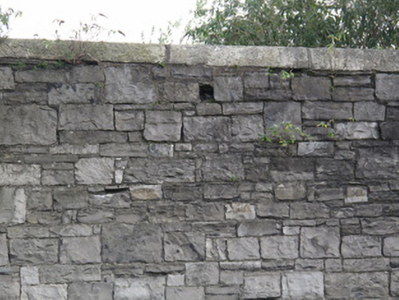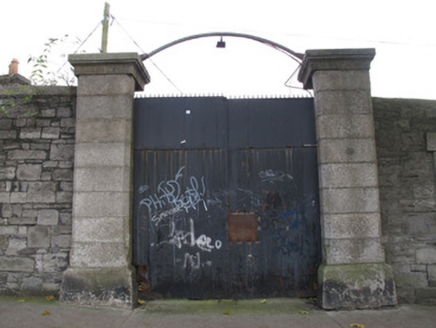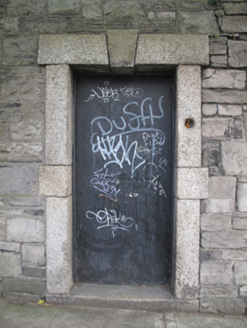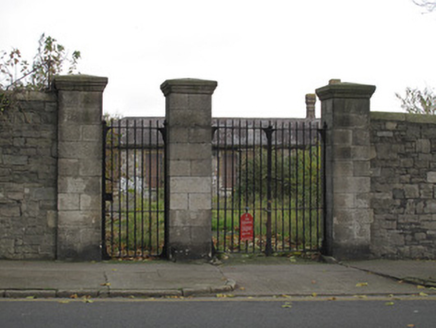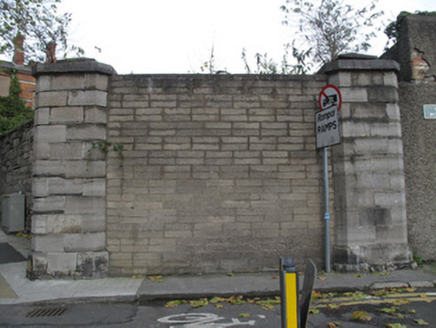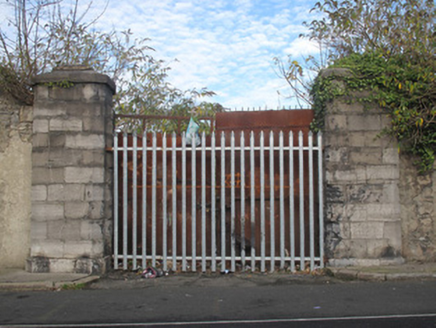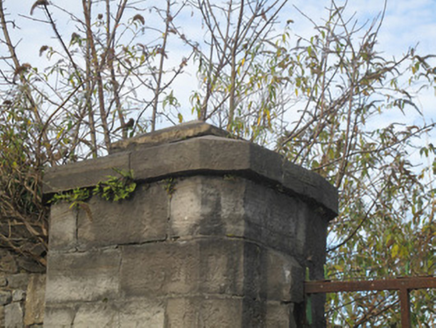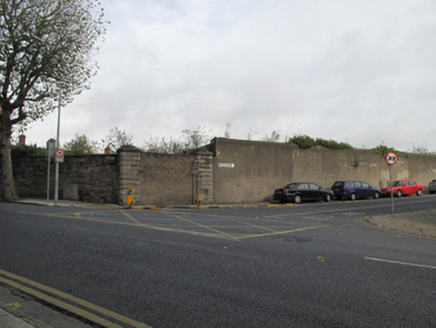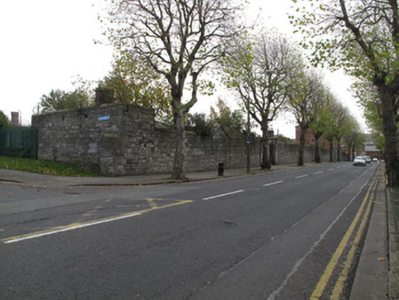Survey Data
Reg No
50070130
Rating
Regional
Categories of Special Interest
Architectural, Social
Previous Name
Ordnance Stores/Isolation Hospital
Original Use
Gates/railings/walls
In Use As
Gates/railings/walls
Date
1820 - 1890
Coordinates
313642, 234524
Date Recorded
06/11/2012
Date Updated
--/--/--
Description
Wall and gateways around former Ordnance Stores, built c.1825, and around Isolation Hospital, built c.1880. Dressed snecked calp limestone, having block-and-start dressed limestone quoins and rounded granite coping in places, roughcast rendered to Montpelier Hill elevation. Gateway to Infirmary Road comprising pair of square-profile granite piers having chamfered corners, flanking double-leaf steel gate, square-headed pedestrian entrance to south with cut granite surround, lintel, keystone and step, single-leaf steel gate. Gateway to Infirmary Road comprising square-profile cut granite piers flanking double-leaf wrought-iron gate and matching single-leaf pedestrian gate. Gateway to corner of Montpelier Hill comprising pair of square-profile cut calp limestone piers, chamfered edges, entrance now blocked. Gateway to Montpelier Hill comprising pair of square-profile cut calp limestone piers having chamfered edges, flanking steel railing.
Appraisal
This wall was built to enclose the former Isolation Hospital and Ordnance Stores associated with the Royal Army Medical Corps Barracks and the Royal Military Infirmary. The Ordnance Stores were mentioned at 'Mountpelier-Hill' with Mr. Wm. Shea as the Superintendent of Stores in the Treble Almanack of 1825, while the Isolation Hospital was not built until the late nineteenth century. Although the hospital site was enclosed prior to this, the difference in materials and form between the walls and piers on Infirmary Road and those on Montpelier Hill indicate that the walls to the north are later. The height and materials of the wall give an impression of strength and impenetrability, which is enhanced by the scale and composition of its four gateways, cut granite and calp limestone employed to good effect to provide a contrast to the material of the walls. The isolation hospital is representative of a number of these buildings which were constructed towards the close of the nineteenth century in an attempt to ease pressure on general hospitals and to eradicate infectious diseases. In this case, it was associated with the Royal Military Infirmary to the west.

